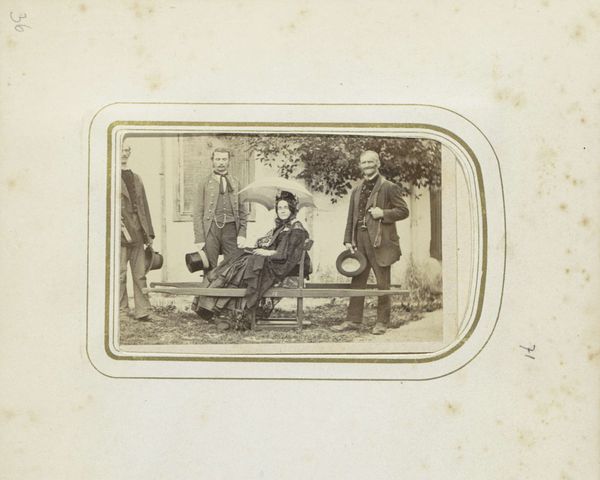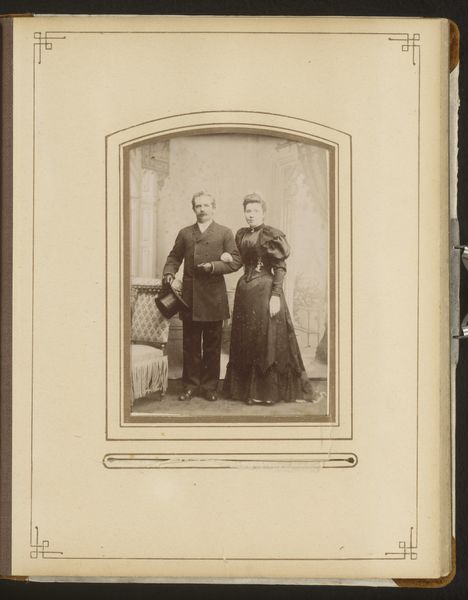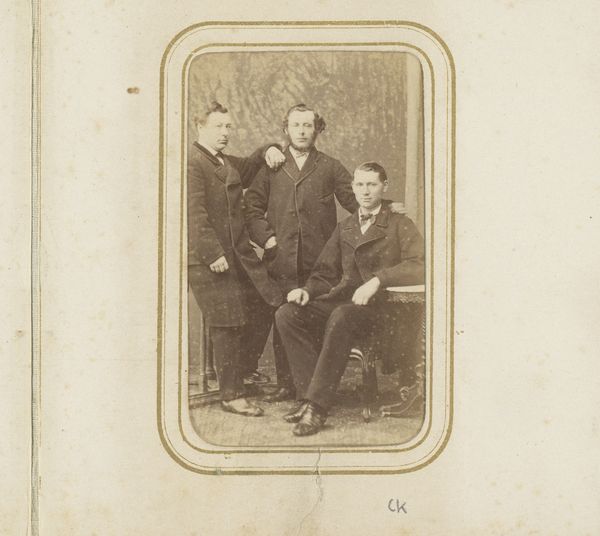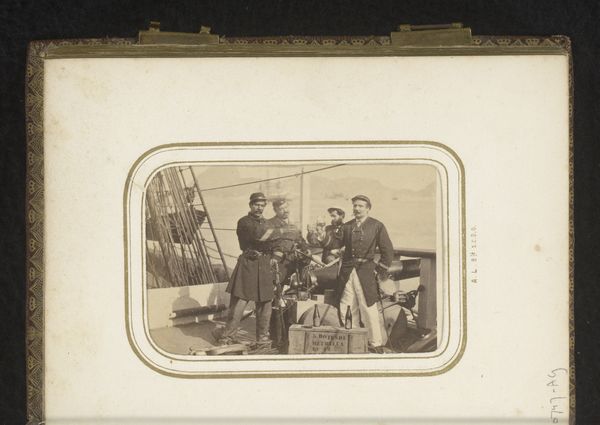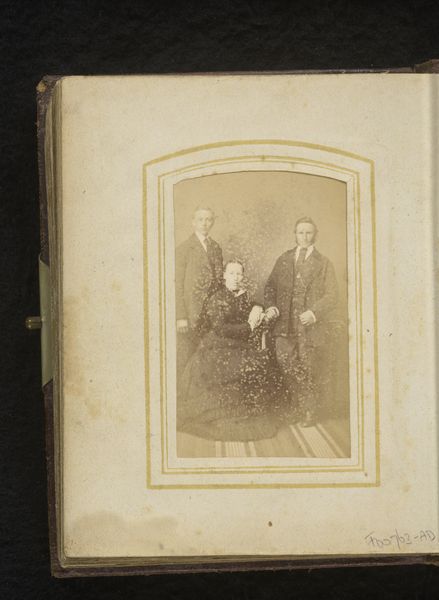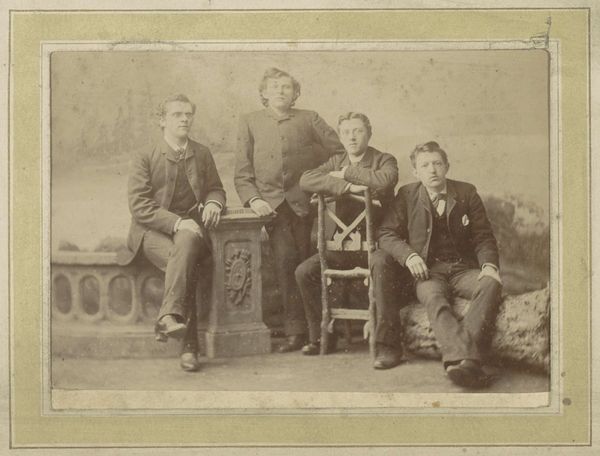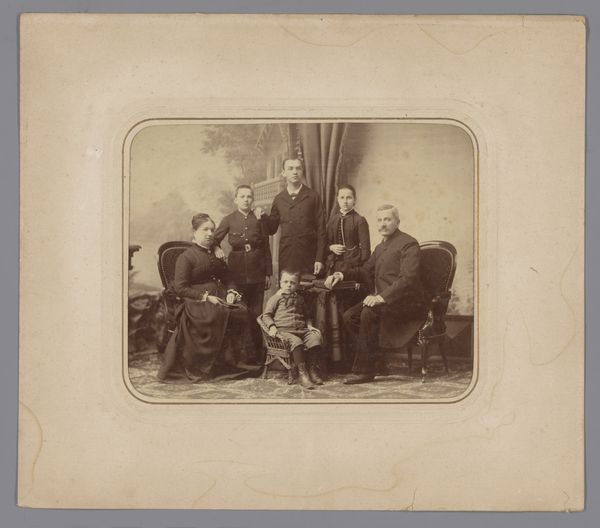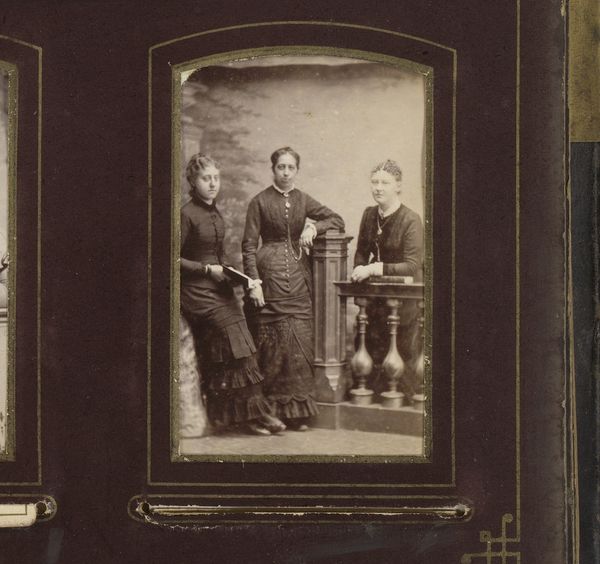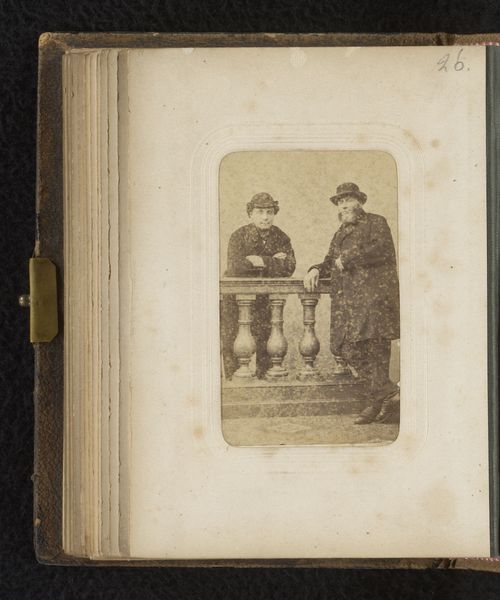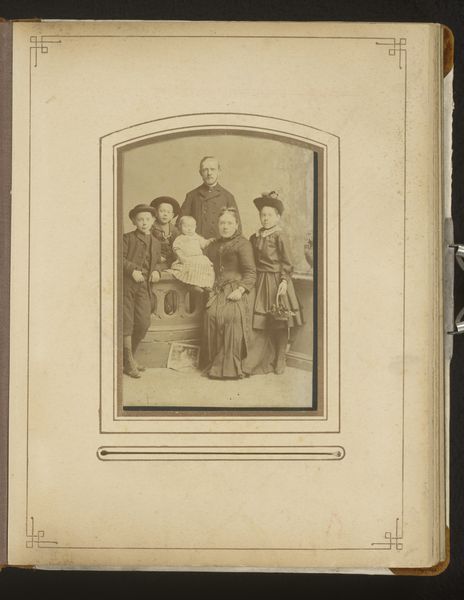
photography
#
portrait
#
photography
#
group-portraits
#
19th century
Dimensions: height 140 mm, width 96 mm, height 167 mm, width 108 mm
Copyright: Rijks Museum: Open Domain
Editor: Here we have an undated photograph from around 1881-1891 by Jacobus de Vries Gzn., titled *Portret van een vrouw met drie kinderen*. It seems to depict a mother and her children in what looks like an outdoor studio setting. The figures have quite a formal presence, but there's a dreamlike melancholy that resonates. What do you see in this piece, from an iconographic perspective? Curator: The melancholy you're picking up on is quite palpable. Beyond the aesthetic, consider the props: the slightly damaged wheel held by one of the boys suggests a potential shift or change, or the cyclical nature of family life itself. What about the mother with the book or papers – what stories does she represent, in a patriarchal society? Editor: The wheel representing change makes sense. But I didn’t even notice the mother had a book or papers. Curator: Examine it closely, there is something she’s holding! See how those small details carry the symbolic weight of intellect, learning, even perhaps secrets. Do you notice the way the tree trunk frames them – how its presence ties them to ancestry, roots, time and family? How would all of these observations influence a viewer? Editor: That makes the entire photo seem much deeper than just a simple family portrait. It's like the artist encoded their lives into these commonplace objects. It's interesting how even simple, almost overlooked things contribute so much meaning. Curator: Exactly. By carefully arranging these items, de Vries Gzn. invites us to decipher more than just their surface presentation but really question social conditions. Considering symbols and understanding historical meaning encourages richer readings of even mundane scenarios. Editor: That is truly fascinating. I’ll certainly view photographs from this period with a new perspective from now on.
Comments
No comments
Be the first to comment and join the conversation on the ultimate creative platform.
